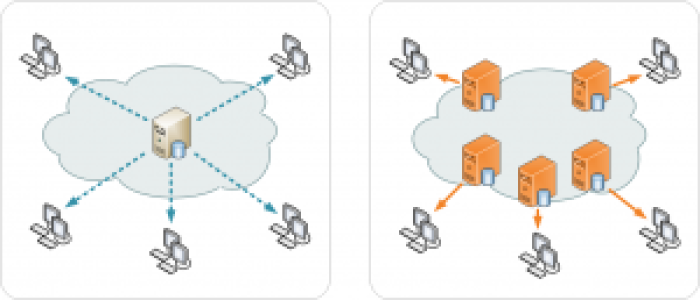
Content Delivery - 6 Great Benefits of Using CDN
A Content Delivery Network (CDN) is a powerful system designed to improve website performance. The most obvious benefit of CDNs is that they solve the biggest problem caused by latency – that annoying wait time from the moment the user requests a web page, to the point when it’s finally onscreen. Two main factors cause this delay. The first is that a choke point gets created when too many users attempt to access a website located on the same server at the same time. The second is the time delay caused when electronic signals travel over great distances. For example, in a Canada-to-Australia Skype call – a question asked from Canada takes several seconds to get to Australia, and then the response takes about the same amount of time to travel back. So there can be a delay of roughly 4-6 seconds experienced between asking a question and hearing the response. This delay would be maddening for a user surfing a website on the other side of the world. The ingenious solution to this problem is to provide mirror or duplicate sites known as Points of Presence (PoPs). Each PoP contains numerous caching servers responsible for content delivery to visitors within its closest proximity. So, CDNs not only reduce the load on any one server but make the caching server physically closer to the end-user. To visualize the difference between single server and a Content Delivery Network, consider this image by Kanoha – here you can see the bottleneck that can occur when many requests are made to a single server versus a Content Delivery Network.

Key Advantages of Content Delivery Networks include:
2. Increased Performance Over Distance Content Delivery Networks store a cached version of its content in multiple geographical locations. What this does is reduce the measurable delay in the time it takes for an electronic signal to physically reach your website’s server and then return to the user, called Round Trip Time (RTT). This minimizes “latency” or the time it takes for the host server to receive, process, and execute an object request. Therefore, the physical location of the facilities is an important consideration. You should always want your PoP to be in a data center located on a prominent hub. This requires that your provider has established peering agreements with other CDNs and major carriers.
Subscribe to Cartika
Receive a coupon code for 99% off your first month of services immediately after completing the form below!

